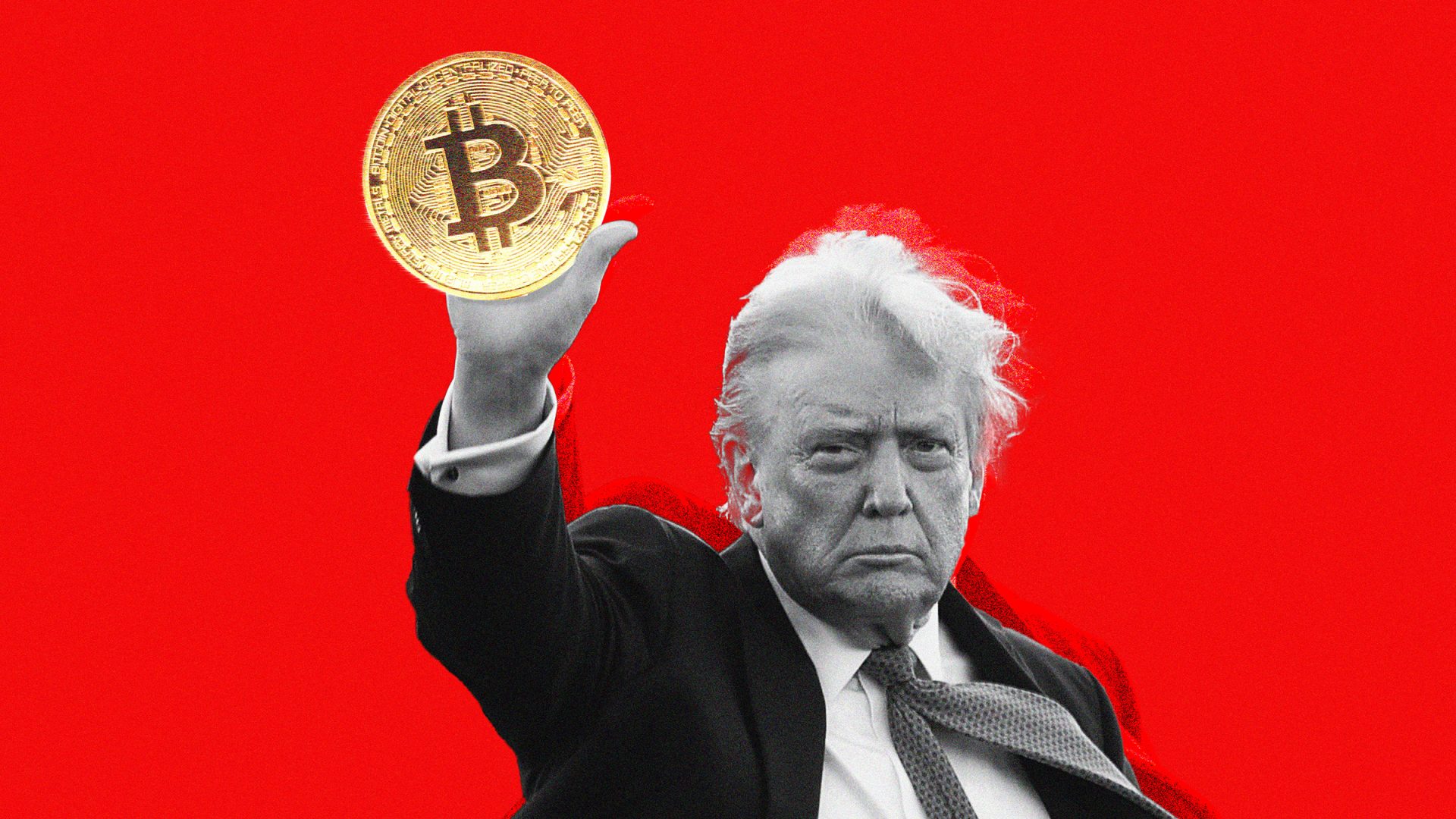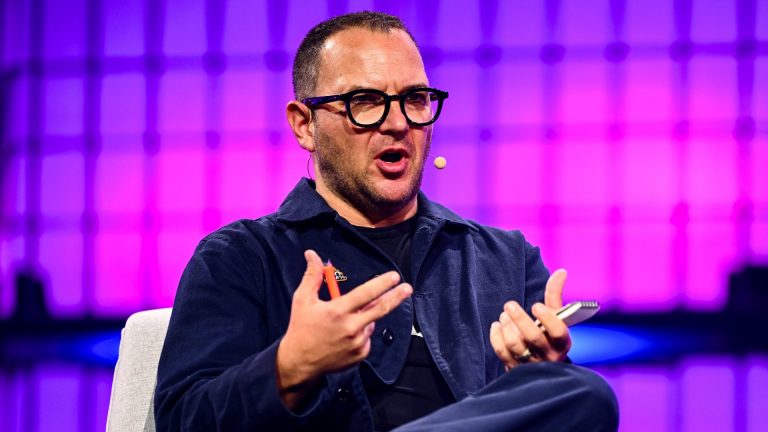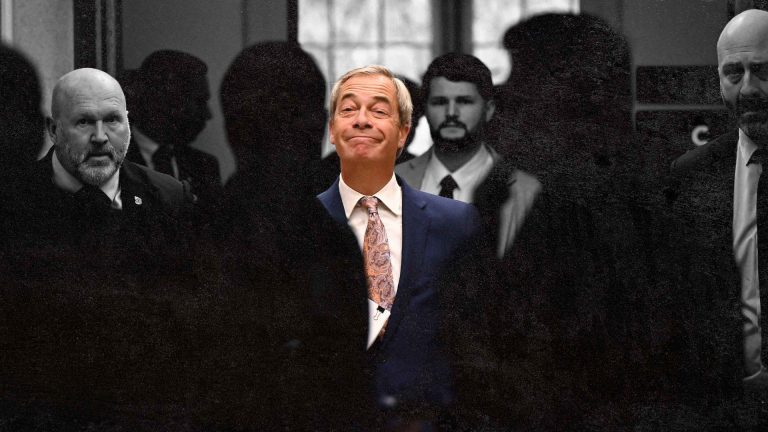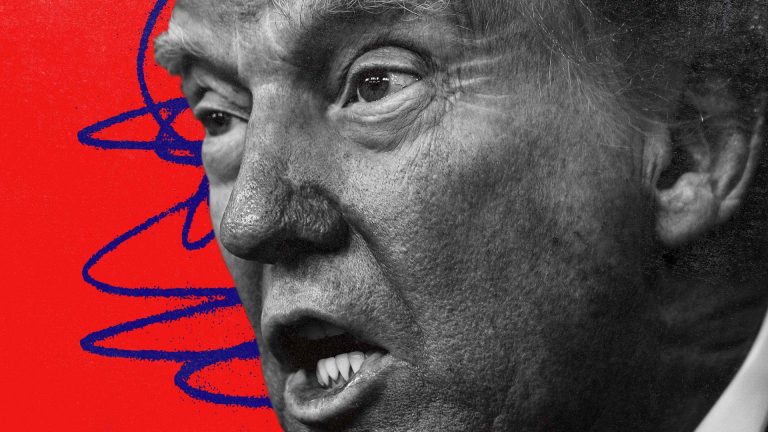In times past, the US president’s dearest wish was to engage the conscience of the nation, by appealing to those better angels of our nature. Not so president Trump, who, when not joking about shooting protestors or bullying foreigners, has a sideline in whipping the citizenry into a frenzy of highly speculative investing by pledging to turn America into the “crypto capital of the world”. And underpinning Trump’s hard pivot into crypto hype, beyond the obviously naked opportunities for self-enrichment, there lies the dark logic of power.
In late May, vice-president JD Vance, along with two of Trump’s sons, Don Jr and Eric, were star guests at a Bitcoin conference held in Las Vegas, the gambling hub of America. “Honestly, I would love to see some of the big banks go extinct,” Eric Trump told the conference, railing against traditional finance, which he said was being “weaponised”. The banks, he said, “deserve” to die.
Vance also pumped the Bitcoin 2025 crowd with a message of 100% support. “I’m here today to say loud and clear, with president Trump crypto finally has a champion and an ally in the White House,” he said.
While Bitcoin’s price dipped after the summit, and has further declined on its pre-summit peak, Donald Trump’s message to the Bitcoin faithful might as well have been scratched in the desert sand in letters a mile high: we’ve got your back!
All this is quite the shift. Only a few years ago, Trump tweeted a critique of “unregulated” crypto, attacking it for being “not money” and warning that crypto’s “highly volatile” value is based on “thin air”. So what’s changed?
The big difference is that Trump, via his wider family business empire and other aligned entities, is invested in crypto in multiple ways. This most transactional of US presidents has realised that crypto offers a richly expanding tapestry of possibilities for #winning, Vegas jackpot-style.
According to Forbes, over the past nine months, the president has netted almost $1bn via various crypto ventures, at a time when he’s in acute need of liquidity. For Trump, crypto is MAGA merch on steroids – he is a huge fan of the stuff. But in all his enthusiasm, and in his dominating presence, Trump obscures a question that perhaps more people should be asking: what the hell is crypto anyway?
Cryptocurrency is a form of tradeable digital asset, which can be referred to as “coins” or “tokens.” They use a system known as blockchain, a type of decentralised ledger technology, which ensures that no one spends any crypto that isn’t theirs, that no crypto is spent twice, and that all transactions are secure.
Suggested Reading
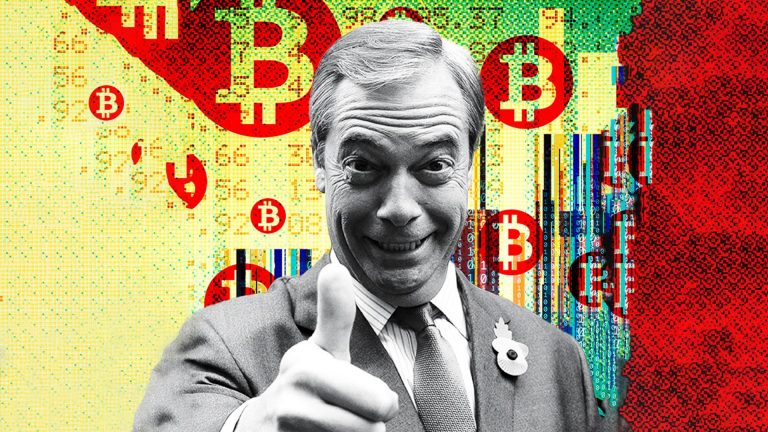

Nigel Farage is deep in the crypto-crapto
Crypto, then, is essentially data – but with rules that allow ownership and transfer to be verified independently of any central authority. This brings you to the question of why anyone would ever think it was worth anything. If you spend a dollar or a euro, there is a sense in which the value of the currency derives from the national economic heft that stands behind it. In other words, the dollar is worth something because it’s underpinned by the US economy.
There is still an element of faith involved in that — but nothing like the leap of faith required when investing in crypto. There is no central bank managing crypto’s wellbeing, and no state guarantee behind its value. Crypto is largely unbacked, and its worth depends on factors like demand, perceived scarcity, network utility, and speculation. It is largely independent of direct political control, which is why right-wing libertarians love it so much. But it also means that crypto’s only value ultimately rests in the fact that people want to buy it.
Bitcoin is probably the best known, but there are many forms of crypto. Memecoins, for example, are branded around trends and influencers to give them a viral appeal. Stablecoins are a bit more grounded, and can be pegged to the value of currencies or commodities, which at least gives a feeling of price stability.
There are also Non-Fungible Tokens (NFTs), which are intended to represent the ownership of a specific, unique, asset, like a digital artwork. These were popular for a while, but have turned out to be almost complete junk.
This is only a first step into a whole jungle of crypto that’s out there, in which actual real money gets pumped in and sucked out through means that can be highly dubious, with none of the rules that usually apply to financial trading.
In consequence, crypto values can be highly volatile. The regulators struggle to keep up, meaning the rules governing crypto are often lax, and transparency – let alone accountability – is sorely lacking. All of this makes cryptocurrency an excellent vehicle for political corruption.
Trump has already managed to tap into the fortunes of wealthy crypto investors thanks to his conversion to crypto cheerleading. The crypto lobby forked out nearly $200m in campaign donations at the last election. Trump got the majority of those funds.
Back in May, the Democratic senator Elizabeth Warren warned against the Republican-backed GENIUS Act, which aimed to increase the size of the stablecoin market to $2 trillion in size, an amount, Warren noted, that was “just a little smaller than the entire GDP of Canada”.
“Passing this bill means that we can expect more anonymous buyers, big companies, and foreign governments to use the President’s stablecoin as both a shadowy bank account shielded from government oversight and as a way to pay off the President personally,” Warren told the Senate.
“This is not a hypothetical problem,” she continued. “Already, an Abu Dhabi investment firm called MGX is using Trump’s stablecoin to finance a $2bn investment in the Binance cryptocurrency exchange, essentially giving Trump a cut of this enormous financial deal. MGX is chaired by the intelligence chief of the United Arab Emirates and co-owned by a firm with extensive ties to the Chinese government.”
And when crypto finance goes wrong, it can be spectacularly bad. In 2022, panic broke out on a crypto trading exchange named FTX and in the ensuing bedlam it turned out that FTX had an $8bn hole in its accounts. Sam Bankman-Fried, who founded the exchange, got 25 years for fraud. There are a lot more stories of investors losing all their crypto than getting to retire young to some Cryptoland paradise.
And yet, crypto can’t be written off entirely – there are good arguments for payment technologies that allow people to send currency to one another. Improving access to financial services for the unbanked, for example, or enabling fast and cheap cross-border payments is also a good thing. But, nonetheless, crypto’s reputation as a paradise for grifters of all stripes has proven hard to shake. That looks even harder now Trump is involved.
What’s the pull? The world of crypto is full of wildly swinging values, price manipulation schemes that set out to turn a profit by exploiting investor naivety and fear of missing out via coordinated efforts to drive up the price of crypto tokens.
Suggested Reading
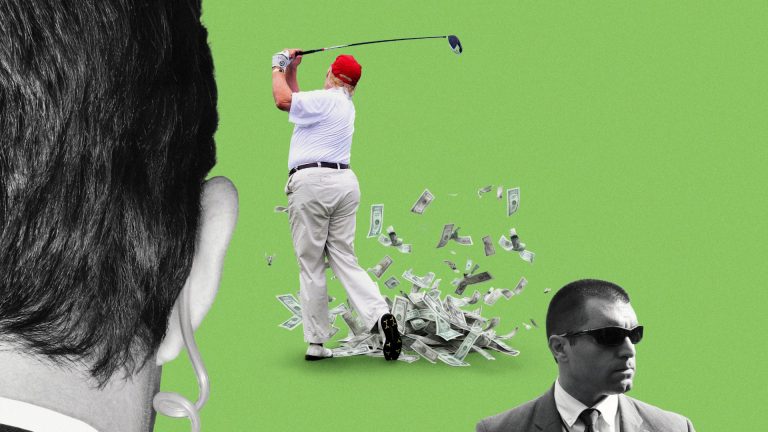

Trump’s golf habit – sponsored by the US tax payer
On top of all that, fees can be levied at various aspects of the crypto chain, creating fertile ground for middlemen to get involved. And Trump definitely knows how to do that.
So enter the US president, with zero shame and a rapidly growing web of crypto entanglements — from an early foray into NFTs to, more recently, hawking crypto tokens via the Trump-linked World Liberty Financial. Trump has issued branded memecoins such as “$TRUMP”, and “$MELANIA”, and has also launched a stablecoin $USD1. It seems that Trump also has a plan to build up a strategic Bitcoin reserve within the US Treasury, and other digital assets may also be stockpiled, per the White House fact sheet.
Trump has turned crypto hype into fat profit. Money has poured into his coffers via a licensing deal on sales of NFTs. He also has a generous profit-share arrangement on sales of World Liberty tokens. He also receives trading fees and crypto payments linked to the buying, selling and swapping of memecoin tokens. He has plans to release a lot more of these, meaning there’s plenty more crypto juice just waiting for Trump to give another squeeze.
The stablecoin venture, meanwhile, offers the chance for Trump and his associates to profit by earning interest on (dollar) deposits — basically, the more buyers of $USD1, the more dollars are deposited and the more interest that money accrues.
As for Trump’s moves to hoard Bitcoin, these look interesting as they suggest a longer term component to his crypto strategy: that he is looking beyond quick and dirty cash-ins. This could be the start of a longer-term commitment to the disruptive potential of digital money, and to its potential to reshape traditional financial structures, hence the family’s “watch out Wall Street” messaging.
Down the line, Trump might envisage holding so much Bitcoin that his administration effectively controls the market. He wouldn’t even need to sell off the public reserve of Bitcoin; even just the threat of dumping Bitcoin and causing a major price crash could put him in charge. It would also force investors to rush to the Oval Office to kiss his ass.
The bald risk for crypto investors is still that their bag of “virtual gold” ends up worth less than what they paid for it z – or indeed, nothing at all.
Yet, for true believers, the lure of riding the crypto rollercoaster remains the prospect of Lamborghini-levels of riches for those who hold on long enough.
Even so, all this crypto #winning might just be Trump warming up. Ever the wildcard, it’s possible he sees in crypto a longer-term weapon for bending the recalcitrant financial and democratic systems to his political will. Crypto is something that could, for example, be deployed to weaken the dollar through diversification — even if just a touch — meshing with his stated ambition to bring manufacturing back to the US. (A strong dollar remains a thorn in the side of that dream; I mean, who wants to buy a $3,000+ iPhone?)
No one really knows what one Bitcoin or any of the other flavours of crypto is worth — or whether a final rug-pull might, one day, drop the curtain on an intricate set of high-tech Ponzi schemes. Still, we can be certain that, where Trump is concerned, all his schemes are powered by pure self-interest.
Natasha Lomas is a tech journalist who lives in Barcelona

